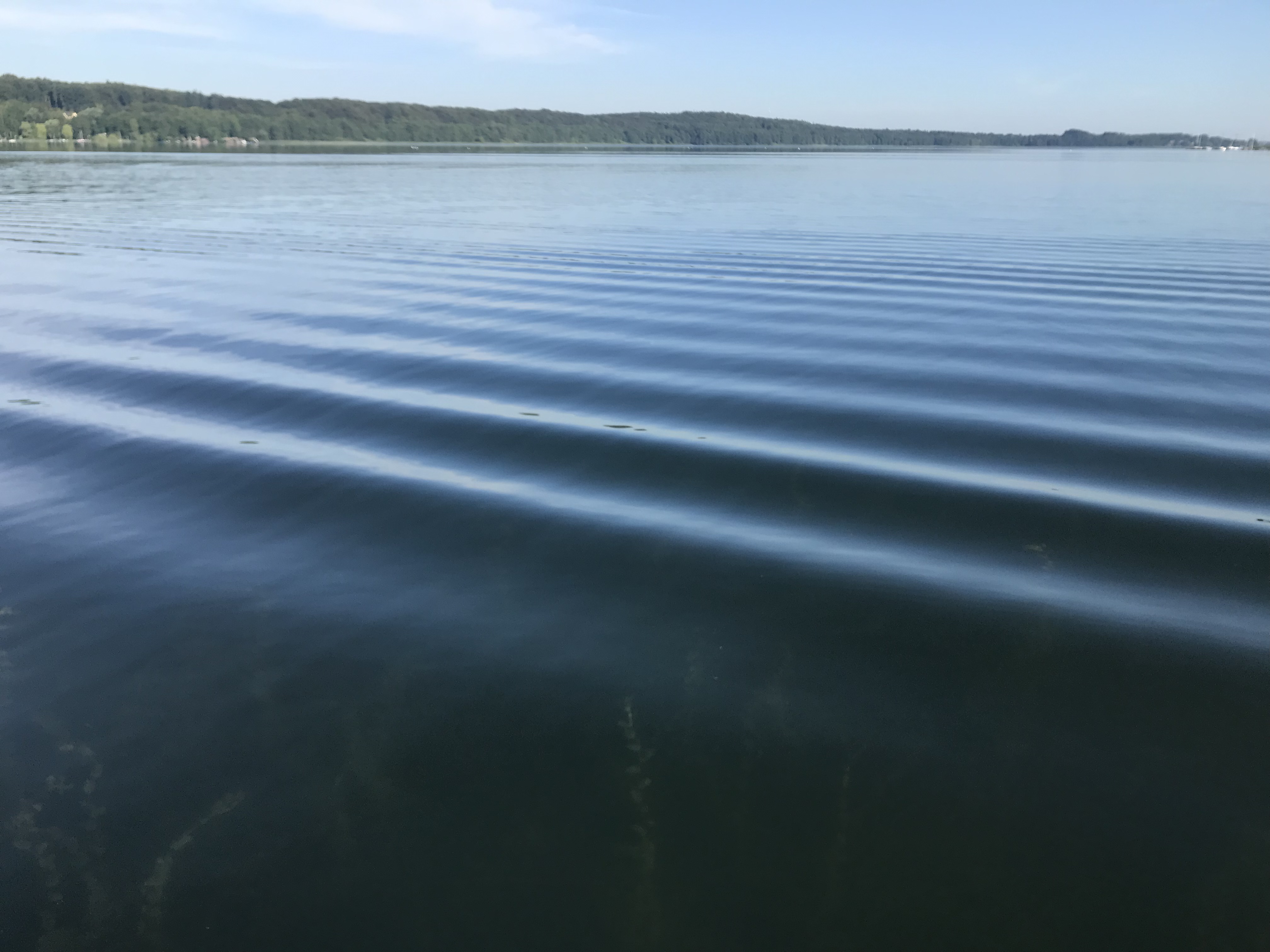
Wake watching at Ratzeburger Segelschule
The waves that ducks (or ships, or anything else moving through water) make are called “wakes”. And wake watching is so much fun! A wake is pretty much the Mach cone in 2D — waves from the duck can’t propagate faster than the leading edge of the wake. When a wake passes by, that’s the moment you would hear the supersonic boom of an aircraft in the Mach cone analogy. That explains why the wake develops as a feathery V with the duck at its tip. Or several ducks at the tips at several Vs, as in the picture above. How awesome is that?
But wake watching is usually more complicated than just Vs with stuff at their tips. See for example below — two ducks with Vs, two row boats also with Vs, but with the additional eddies where their oars pushed through the water.
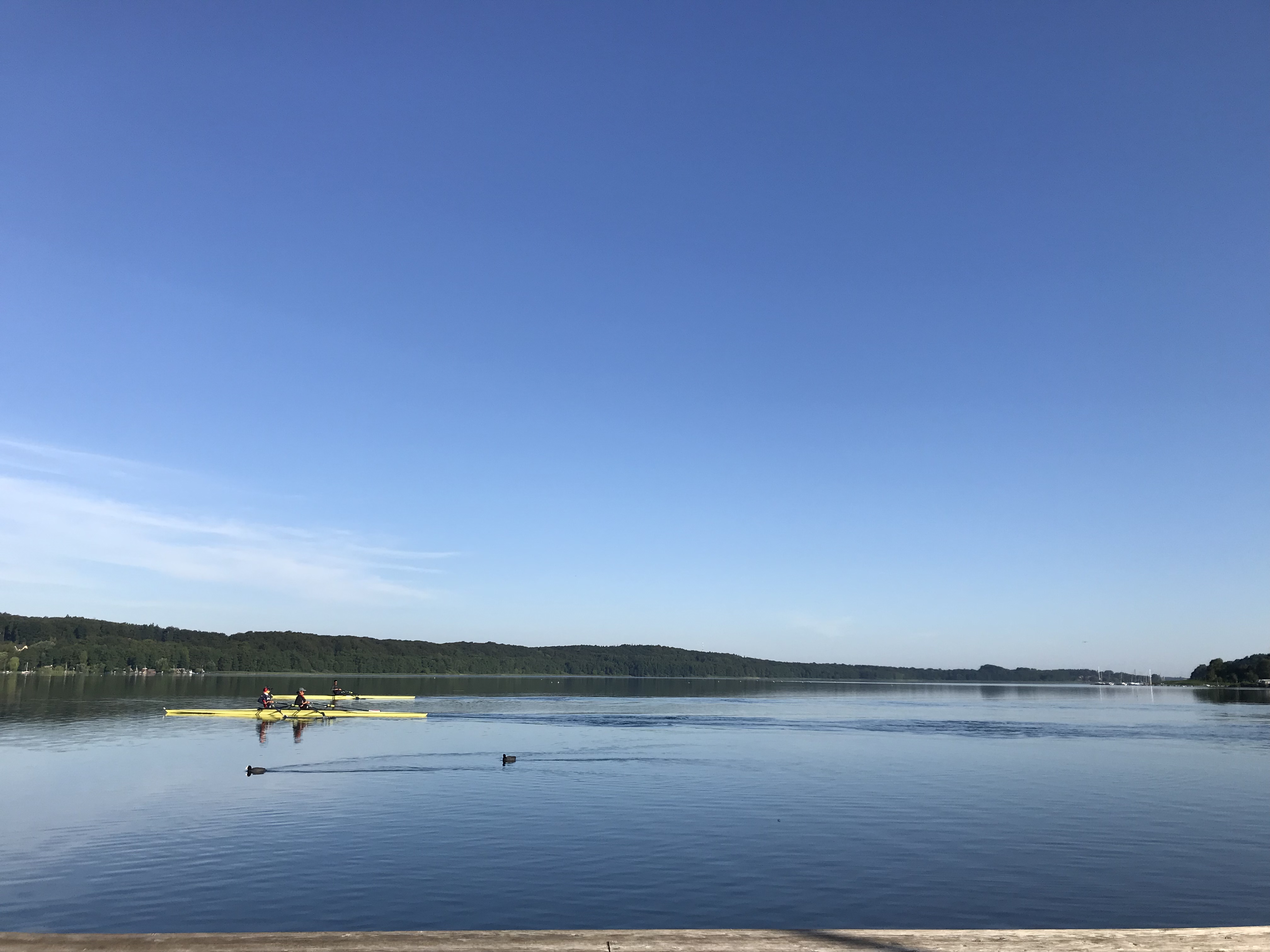
See how different the two pairs of wakes look?
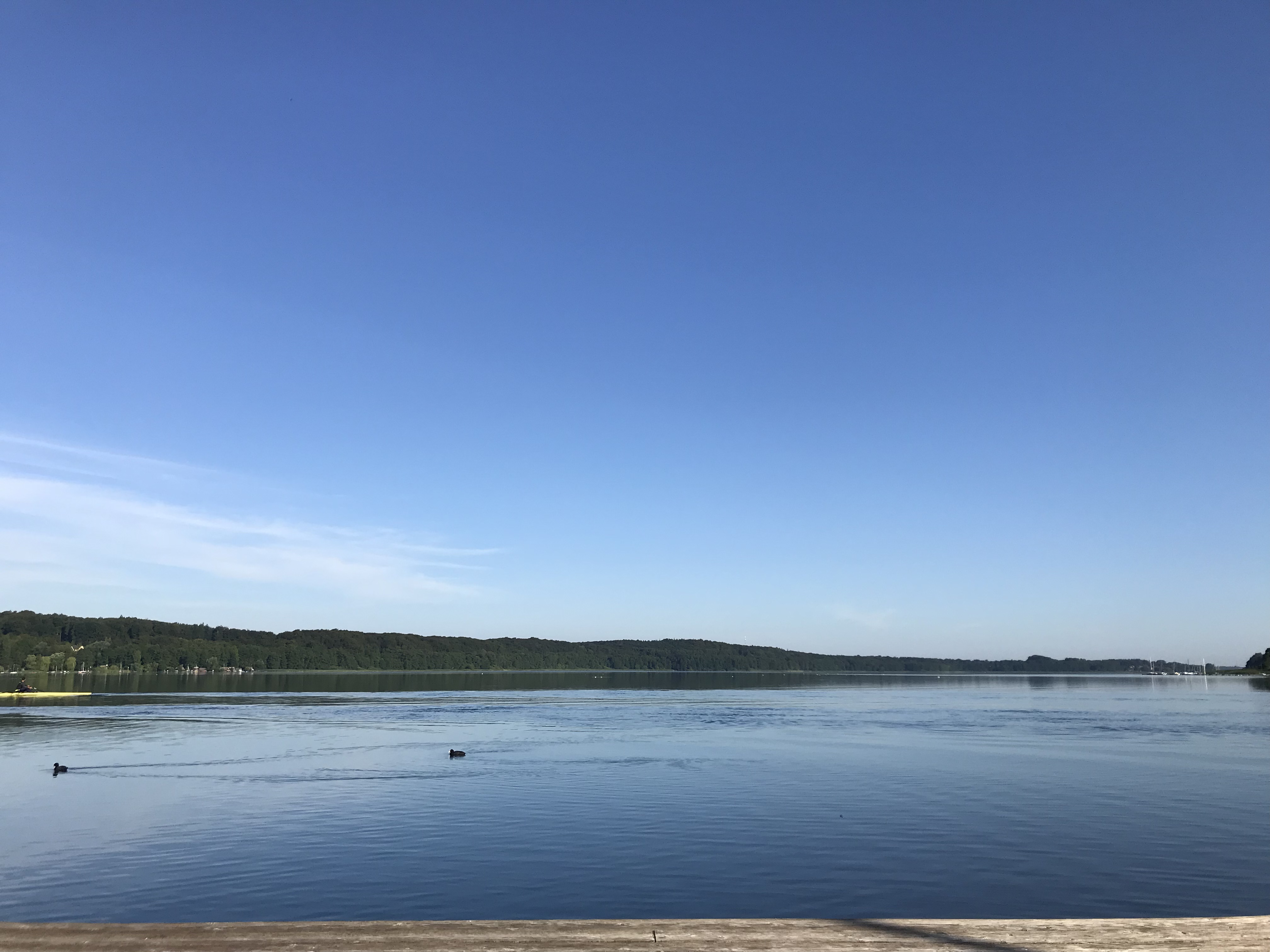
Or here, we have wakes again, but they are now occurring on a lake surface that shows more different waves: The half circles that my feet tapping on the water made! And, if you look closely, you can spot algae growing in the lake in the foreground of the picture.
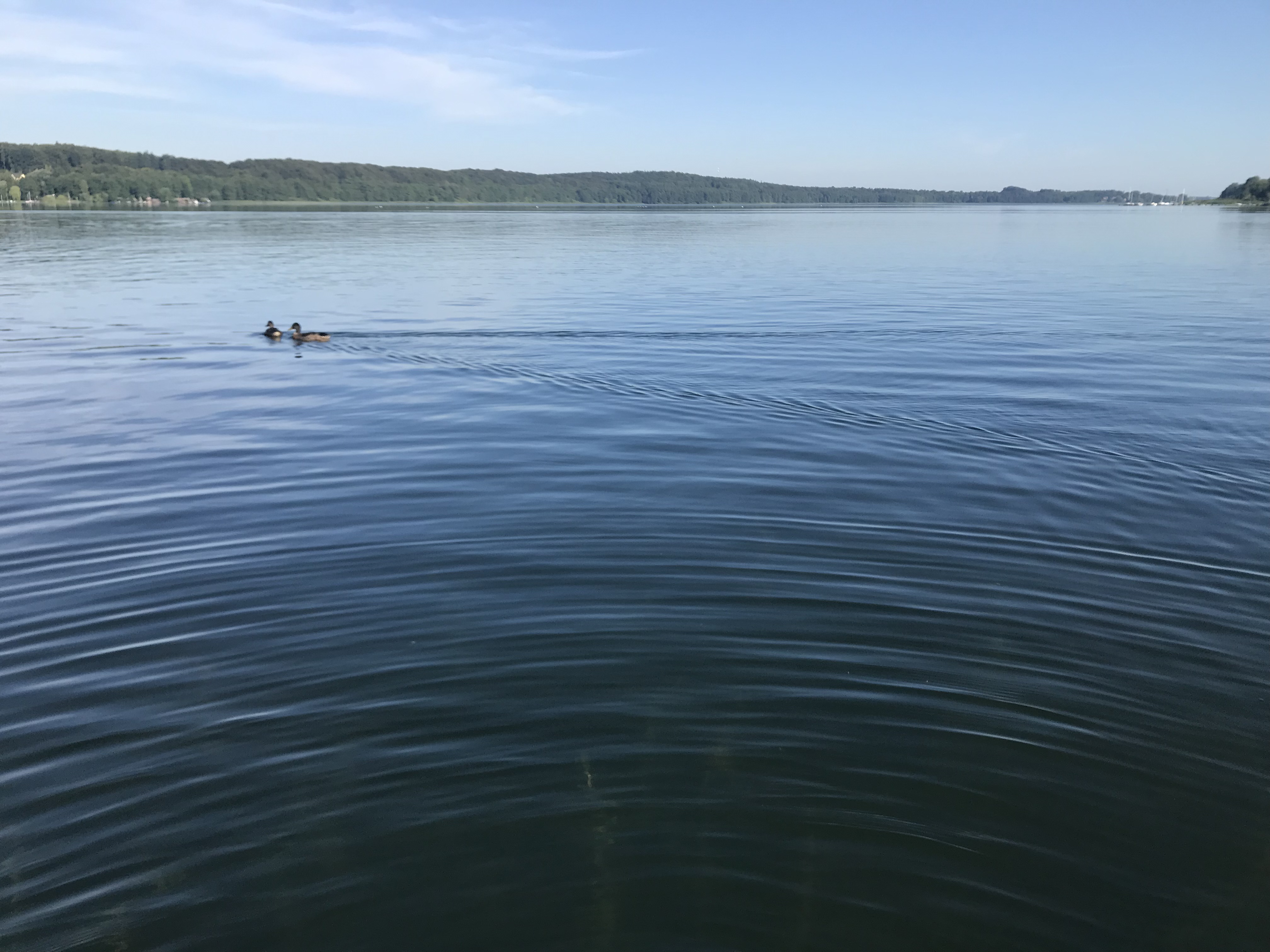
Isn’t it fascinating how you see the algae in the foreground, but the further you look towards the other shore of the lake, the more you see the reflection of the sky or the other shore instead?
That’s due to a phenomenon called “total internal reflection“: For light that hits the interface between two different materials (air and water in this case), there are angles at which it can cross the interface (at steep angles we can look from the air into the water and see the algae), and others where it can’t (at small angles, we cannot look into the water, light gets reflected at the lake’s surface and we see the opposite shore instead). This fascinates me time and time again!
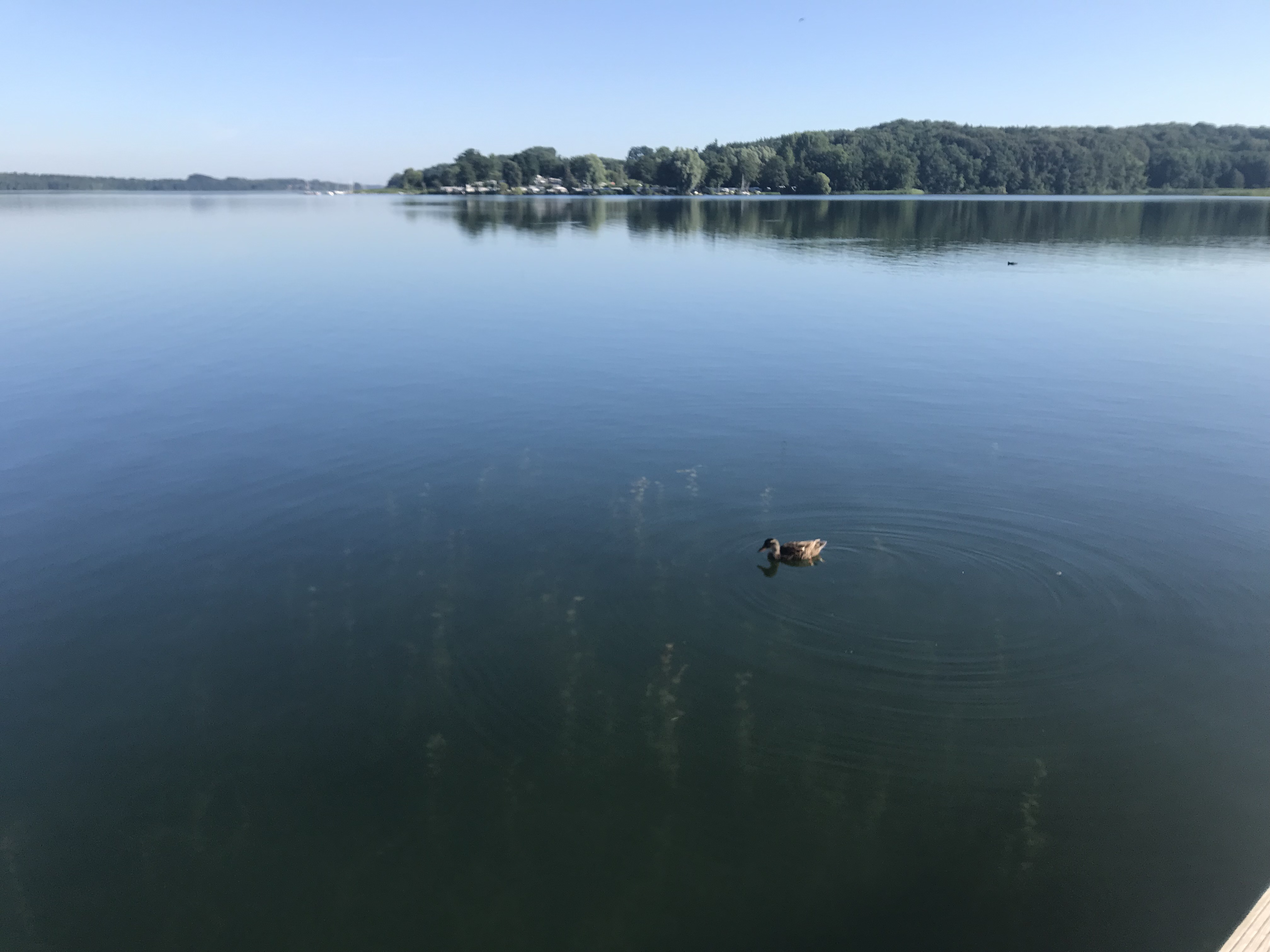
Note how the duck in the image above doesn’t actually have a wake? That’s because it’s swimming too slowly for the wake to develop — it is just radiating ring waves in all directions.
Below, this is kind of a boarder line wake — we can see the V developing, but se also still see the ring waves in the spot where the duck first started swimming.
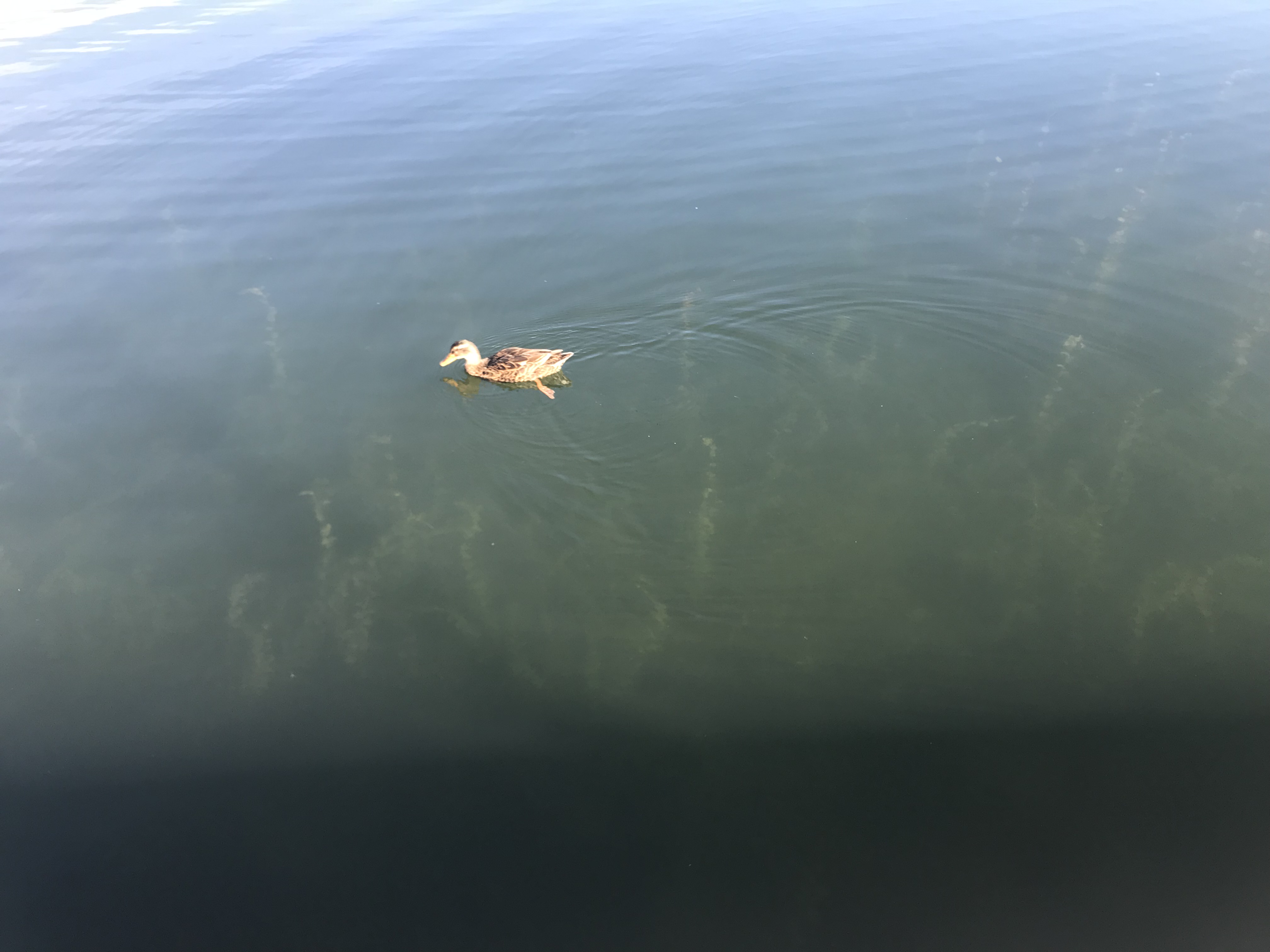
But of course, wakes are only straight Vs when the ship is driving in a straight line, too, otherwise it will get deformed like below.
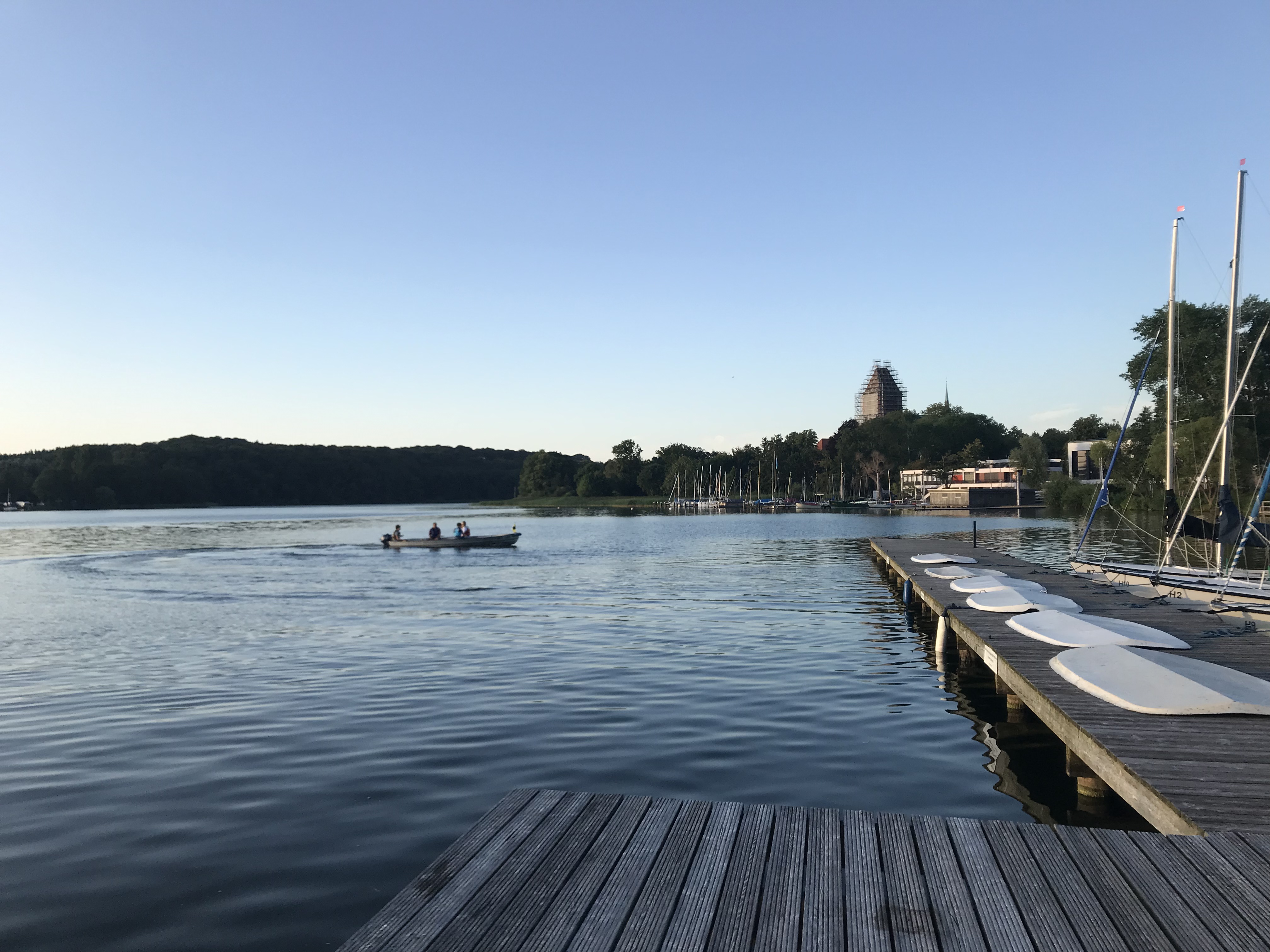
And just because I love this picture so much: Here is a wake coming across the lake…
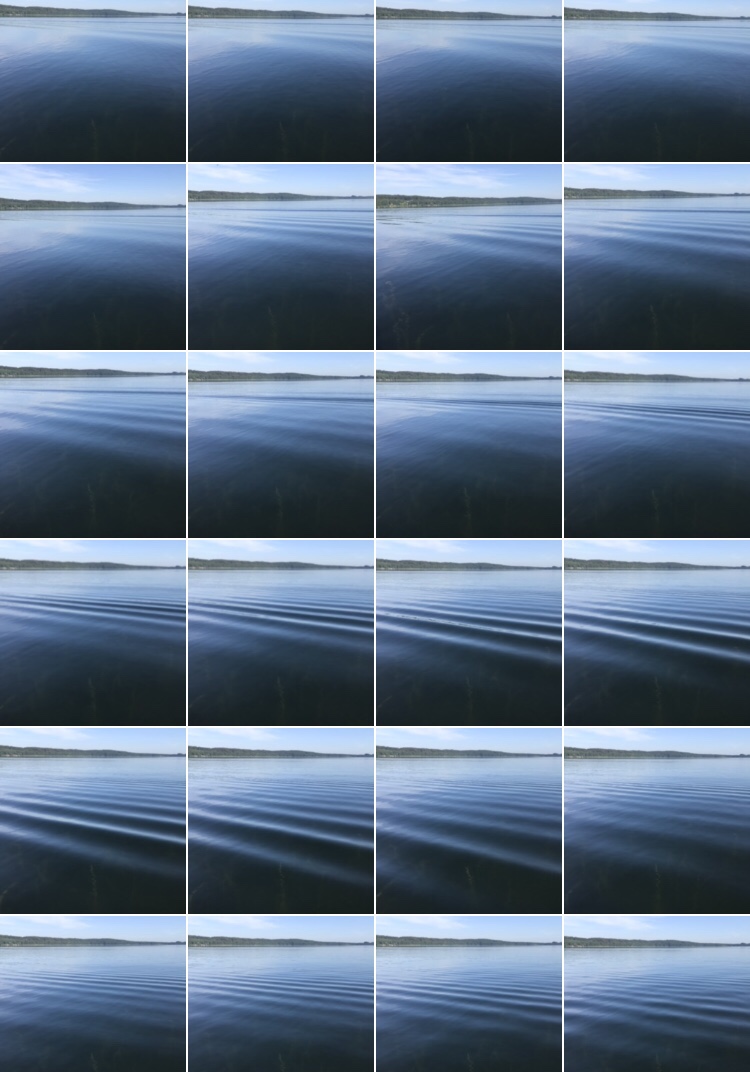
Walk to & visit at GEOMAR as wave watching occasion | Dr. Mirjam S. Glessmer says:
[…] and regular wave crests were caused by a ship — they are one side of the V of a ship’s wake that’s about to reach the sea wall […]